"Some scientists claim that hydrogen, because it is so plentiful, is the basic building block of the universe. I dispute that. I say there is more stupidity than hydrogen, and that is the basic building block of the universe." -Frank Zappa
Oh yeah, Zappa? Well, let me show you what hydrogen can do!
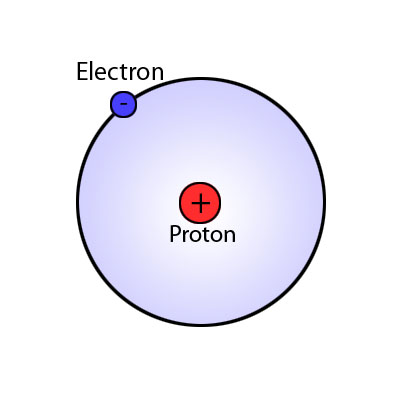
With just one proton and one electron, hydrogen is not only the simplest of all the atoms in the Universe, it's also the most abundant: over 90% of all the atoms in the Universe are hydrogen atoms!
How could such a small thing possibly have anything interesting to tell us about the entire Universe?
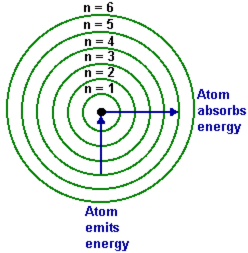
Well, for starters, hydrogen has very specific energy levels where its electron is allowed to live. Hit it with just the right amount of energy, and it will absorb it, and the electron will jump up to a higher energy level.
Or, if you let it sit there in a higher energy state, it'll look at those lower -- and more stable -- energy levels, and spontaneously jump down there.
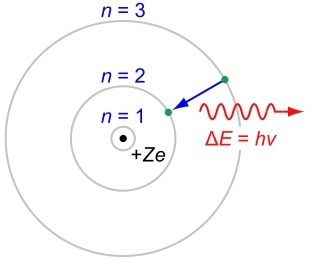
And when they do, they emit radiation! If you jump down to the first energy level, you emit ultraviolet light and belong to the Lyman series; if you jump down to the second energy level, you emit (mostly) visible light and belong to the Balmer series; while if you jump down to the third, you give off infrared light and belong to the Paschen series.
In fact, the jump from the third to the second -- the Balmer alpha line -- is so strong that if you look through a telescope at a galaxy that's forming stars:

it's that line that causes the galaxy to glow red! In the case of the Whirlpool Galaxy, above, you can see exactly where along its great spiral arms it's presently forming stars, just from this red glow of the hydrogen!
But most of the hydrogen in the Universe isn't in some exciting, star-forming region. Most of it's in the cool, boring depths of space, sitting around in its lowest energy state.
And if you're hydrogen in its ground state, you're just waiting for some light of just the right energy to come along and -- ever so briefly -- to give you a ride up to the next exciting energy level!
What's hydrogen's best friend in this case? Ultraviolet light of a wavelength 1216 Angstroms, known as the Lyman-alpha line, or the right amount of energy to kick it up from the ground state to the first excited state! Of course, there are other excited states, and they make absorption lines too, but the Lyman-alpha line is the strongest one.

So why should I care? And moreover, how can something as mundane as this super-simple atom emitting and absorbing light teach me anything about dark matter?!
Well, we know where light comes from in the Universe: from stars and galaxies!
Well, my Universe isn't just empty; there ought to be clumps of this hydrogen gas all over the place! And wherever my light from these distant galaxies passes through these clumps of gas, that neutral hydrogen will leave its mark by absorbing that 1216 Angstrom light.
But because of the expansion of the Universe, this light gets redshifted! In other words, you place cold, neutral hydrogen gas at different distances away from us, in between us and a distant galaxy, and it will leave absorption lines at different wavelengths!
What we basically do is take a spectrum of distant galaxies using a super-powerful telescope (like Hubble), and see where we have clumps of hydrogen gas along the way.
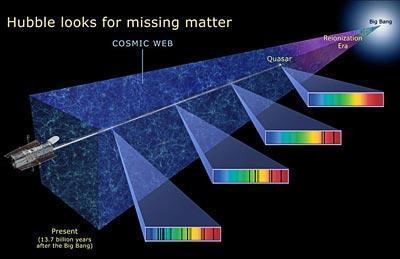
If you look at something nearby, you'll only have a few clumps of gas in between you and the object you're observing. But if you look at something very far away, you're likely to get a whole slew of absorption lines! For very distant objects, there are so many clumps of gas that the lines we see are known as the Lyman-alpha forest!
Now, here's where it gets interesting! Because when we look at things that are farther away, we're also looking back in time! And if we want to get these big, deep absorption lines happening far away, we need to have dense, collapsed clouds of gas.
Guess what? That tells you something about your dark matter! Because if you want to make something that's dense and collapsed, it can't be moving too quickly. In astrophysics, if you're moving quickly, we call you hot, and if you're moving slowly, we call you cold.
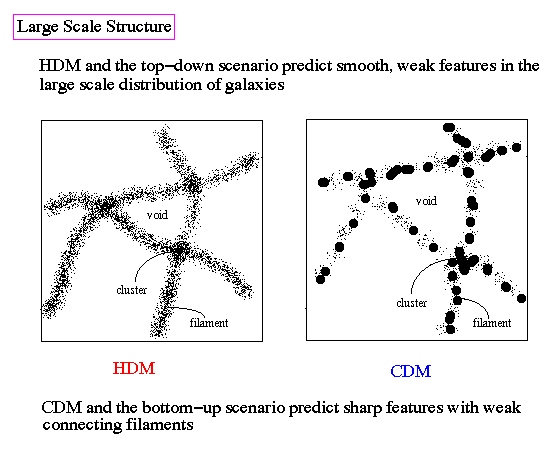
For dark matter, the cosmic microwave background doesn't care whether you're hot or cold. But structure does, and the Lyman-alpha forest is very sensitive to it! If dark matter were hot (or even if it were too warm), the forest would be too shallow; in other words, hot dark matter makes it too hard to form small-scale structure at early times.
But we see the evidence of this small-scale structure directly in the Lyman-alpha forest! What does this tell us?
It tells us that dark matter can be WIMPs (like from supersymmetry), because they're too massive to move quickly, or they can be particles that are born cold, like axions or (some) sterile neutrinos, because they started off moving slowly. But they can't be regular neutrinos or hot sterile neutrinos, among others, because this small-scale structure -- and hence the hydrogen lines that we see -- would get washed out at early times!
So just like that, from looking at hydrogen, we can tell how cold our Universe's dark matter has to be. And that's how hydrogen teaches us the temperature of dark matter!






Isn't hot or cold relative to us? Why would dark matter be born in the same reference frame as Earth?
What's a sterile neutrino?
What? No, temperature is absolute, with an absolute minimum at 0 K.
Doesn't that tell us something about when during inflation CDM uncoupled from everything else?
CDM had to decouple first, so it could cool by adiabatic explansion while everything else got heated up. Only then would you have a CDM gravitational background for the matter to collect in when it got cool enough to do so.
Amazing! I truly enjoy your blog. I read it regularly and have never commented, but I thought you should know this budding physicist greatly appreciates your food for thought! Please keep it up!
You never run out of new, interesting things to share about dark matter.
I recently finished a book on hydrogen written by John S Ridgen, "Hydrogen, The Essential Element" that I can't recommend highly enough. And thanks for your blog post, it illuminated some points in the book that I was having trouble with.
But you forgot to tell us how cold our Universe's dark matter actually is.
"Hydrogen is a light, colorless, odorless gas which, given enough time, turns into people."
(A wonderful quote, variously attributed to Edward R. Harrison, Henry Hiebert, Steen Rasmussen...)
Oh, and here's an excellent image to illustrate that quote:
http://schuhlelewis.blogspot.com/2010/02/greatest-story-ever-told-or-hi…
iirc, cosmologists use the language of "temperature" to describe whether the dark matter interacts with itself or not (hotter dark matter interacting more). is that right? normally, temperature is proportional to kinetic energy, and it's hard to see how dark matter could be intrinsically "hot" in this sense.
If galaxies are expanding away from us faster the further away they are, and the further away they are the further back in time we are seeing them, then why does everyone say the universe is expanding quicker the more time passes? Why doesn't that indicate that in the past things were accelerating away faster and slowing down in the future?
Also, why is the CMB visible in all directions of the sky, if it came from the center region of the universe billions of years b/f earth of humans were ever created? If the big bang is to be accurate as a single point expanding rapidly, then the CMB should be visible in one direction.
How do cosmologist explain away these issues?
There is no such thing.
You seem to imagine that the Big Bang was an explosion in space. Instead, it was an explosion of space. Space itself is expanding, and the CMB expands as part of it. The CMB doesn't move relative to space.
The universe is like the surface of a balloon that is being blown up, not like the interior of a balloon.
@David: Sterile in the context of particle physics would mean a particle that does not interact at all with other matter, except for gravity (otherwise we might just as well postulate invisible pink unicorns for CDM ;) ).
http://en.wikipedia.org/wiki/Sterile_neutrino
BBC, Frankfurt Havaalanıânın 2 numaralı terminalinin dıÅında gerçekleÅen saldırının ardından 21 yaÅında bir Kosovalıânın tutuklandıÄını bildirirken, Kosova İçiÅleri Bakanı Bayram Recepi, Mitroviça kentinden geldiÄi belirtilen Åüphelinin isminin Arif Uka olduÄunu söyledi
Kudos for the image credits.
Heretic! IPU is warm! It's all about the Invisible Space Pickle.
If it were not for these two wonderful entities called the dark matter and dark energy, we would have an extragalactic catastrophe. This is because General Relativity and Newton's Universal Law of Gravitation almost completely fail to predict gravitational phenomena found beyond the Milky Way. There are more than ten underground detectors through out the world which have yet to find any evidence for the dark matter. Our esteemed scientist are not even trying to directly detect the dark energy. Mostly what they do is to use existing and specially dedicated satellites to more reliably measure the facts of cosmic acceleration which was discovered in 1989. If mass warps space, then we should expect gravitational waves. Seven hundred scientists just published a paper where they found no evidence for these waves.
( http://arxiv.org/abs/1102.3781 )
A group from the ten-billion-dollar LHC have published a paper which declares evidence for dark matter, SUSY, or the Higgs particle has been found.
( http://arxiv.org/abs/1102.4585 )
Scientists are supposed to be skeptical and reluctant to jump to conclusions. But to me they seem to be dedicated faith defenders of two these two hypothesized ideas: the dark matter and the dark energy. Maybe if they were given less money searching them these elusive and enigmatic entities they would more circumspect about their reality.
You seem to imagine that the Big Bang was an explosion in space. Instead, it was an explosion of space. Space itself is expanding, and the CMB expands as part of it. The CMB doesn't move relative to space.
How exact does the photon frequency have to be to cause absorption? Quantized exact?
Are you sure about the 90%+ rate of hydrogen in the universe? If I remember astronomy right the baryonic matter of the universe is ~74% hydrogen, ~24% helium and a little bit "something else"...
(it was 1/4 helium-4 and 3/4 hydrogen just after the beginning of the Nucleosynthesis after the big bang)
Sorry, just saw you were talking about number, not mass... my fault
@David: What you say makes sense on the surface, but I still have a hard time understanding the concept on a more fundamental level. I just get lost b/c it seems when it supports one argument people say there is no such thing as a central area to Universe. And at the same time, I'm expected to accept the BB which says that when extrapolated we find all matter in the universe was located in one centralized region. So which is it? Watch, just to confuse me even more some one with a PhD in Quantum Mechanics will tell me that both are true.
Care to tackle my other question?
You suggest that the CMB expands as part of space. So as expansions happens, the CMB imparts its energy to the expanding space and cools. Cosmic inflation is essentially a type of cosmic expansion, although the term refers to a specific event at the beginning of time. If the CMB is expanding as part of space, than the CMB should have been spread out at the moment of inflation, and not 379,000 yrs later. (after the decoupling of matter and radiation)or is it not until the decoupling that the CMB is now part of space? Oww, I think I just hyper-extended my cerebral cortex.
@crd2: Are you aware of the balloon analogy for the expansion of space? If yes: just picture the CMBR travelling on the surface of the balloon. If no: look it up (you can find it on many places on the web!), and then return to the previous sentence. ;-)
Does that help?
I understood everything perfectly up until this point :
".. And if we want to get these big, deep absorption lines happening far away, we need to have dense, collapsed clouds of gas"
Clumped gravitation requires an anomaly: a) dark matter, b) MOND, or c) nonconservation of angular momentum. Dark matter extrudes from SUSY, itself an empirical disaster (LHC absence; proton decay fail in Super-K and IceCube). MOND is good,
http://physics.aps.org/pdf/10.1103/PhysRevLett.106.121303.pdf
PRL 106, 121303 (2011), "Novel Test of Modified Newtonian Dynamics with Gas Rich Galaxies"
but lacks testable origin. Non-conservation of angular momentum is sourceable, and measurable on a bench top. An experiment in existing apparatus will falsify defective theory.
Time flows unidirectionally. Broken time-reversal sources chirality. The universe is observed chiral at all scales. Manually inserted symmetry breakings of mirror-symmetric derived universes (matter vs. antimatter, electroweak interaction... biological homochirality) are suddenly natural and unavoidable, arxiv:1103.4192.
Conservation of angular momentum couples with vacuum isotropy through Noether's theorems. If vacuum anisotropy is reproducibly demonstrated, fail. Zero vacuum anisotropy for massless (boson) photons: arxiv:0912.5057, 0905.1929, 0706.2031. Vacuum anisotropy toward (fermion) mass configuration is untested. Mass gravitates.
Noether's theorems require continuous symmetries or discontinuous symmetries approximated by Taylor series. Geometric parity is excluded from both. OPPOSITE SHOES VIOLATE THE EQUIVALENCE PRINCIPLE without contradicting any prior observation. Chemically and macroscopically identical, opposite geometric parity atomic mass distributions locally vacuum free fall along non-identical minimum action trajectories. A left-footed vacuum is blind to socks, left shoes, and even loose right shoes... but not to tight right shoes.
Crystallography provides test masses to arbitrarily large size with structural perfection. The space groups are 230 unique periodic self-similar configurations of anonymous points in 3-space. 65 Sohncke space groups can contain chiral contents. Within those 65, 11 pairs of enantiomorphic space groups are mathematically chiral independent of contents. Three pairs of enantiomorphic space groups contain no racemic and no conflicting sense screw axes within a single space group: P3(1)21 / P3(2)21 (e.g., alpha-quartz), P3(1)12 / P3(2)12, and P3(1) / P3(2) (e.g. gamma-glycine).
Geometric parity test masses are then enantiomorphic space group oppose single crystals of alpha-quartz. Hemi-parity controls are each against amorphous fused silica. Ditto for single crystals of gamma-glycine. Hemi-parity controls here are each against alpha-glycine in achiral space group P2(1)/n.
http://www.mazepath.com/uncleal/erotor1.jpg
Two geometric parity Eotvos experiments to reproducibly demonstrate massed sector vacuum anisotropy.
Theory is preferred to experiment because virtual mud packs tighter than real gems. Grant-funded theory is an abusive hegemony of beige. Somebody should look. The worst it can do is succeed.
Hydrogen FTW! (As if there were any original contenders. :-D)
@ crd2:
I see a lot of questions, but nothing about actual issues of the current cosmology. But you are also edging closer to the actual theory AFAIU it. Questions are useful!
There is no location of the initial volume with respect to the observable universe, because that is all what was observable. It was merely a case of the initial volume being smaller.
Which was, I believe, how we can measure an increase in expansion rate as the universe grows older. Starts With A Bang has had many excellent articles on dark energy. Here is one of them: "The big thing is that, in a Universe with dark energy, distant objects will appear to be fainter than in a Universe without it. And in 1998, that was exactly what was discovered: Type Ia supernovae, formed the same way at all times in the Universe, were fainter than they should have been at large distances!" [Italics removed.]
Then you ask, I believe, how observations can be reconciled with the integrated history of the universe as it is theorized to be now. You have to predict the observations that come from alternative hypotheses.
Your alternative would have the distant objects appear stronger, not fainter, as they would put them closer than observed.
I'm sure Starts With A Bang has some article on this, but I couldn't find it. As it happens, Wp has a useful article on CMB.
You seem, to me, to be confusing the expansion of the universe with the means with how to observe it. As Wp notes, CMB can only be observed after decoupling: "The CMB gives a snapshot of the universe when, according to standard cosmology, the temperature dropped enough to allow electrons and protons to form hydrogen atoms, thus making the universe transparent to radiation." No radiation, no CMB.
@ Chris:
That sentence is restating the predicted cause for the image series of the L-A forest, changing the perspective from far time to far distance as we can with a finite (if large) speed of light - seeing farther out in the universe means seeing farther back in time.
This is done because the article then goes on to discuss size distributions.
"No radiation, no CMB." I believe I was too glib there. What matters is that the CMB wasn't observable until then.
I believe the radiation density wasn't entirely diluted by having many natural temporal sink-source scatterers, if you go with a photon model. The lowering of radiation density depends on the actual numbers of course. But again, it doesn't matter, the CMB bears the imprint of the last scattering as I think it is described.
You suggest that the CMB expands as part of space. So as expansions happens, the CMB imparts its energy to the expanding space and cools. Cosmic inflation is essentially a type of cosmic expansion, although the term refers to a specific event at the beginning of time. If the CMB is expanding as part of space, than the CMB should have been spread out at the moment of inflation, and not 379,000 yrs later. (after the decoupling of matter and radiation)or is it not until the decoupling that the CMB is now part of space? Oww, I think I just hyper-extended my cerebral cortex
@TorbjOrn Larson, OM
Much much better, thanks. I read the wp article on CMB about 4 times (skimmed once b/f my 1st post and 3 times after). I find bits of the wp article easily digestible, while others bury me with technical details. With cosmologists using the CMB data to support/refute such a wide range of arguments, I feel obligated to understand it more, so I can grasp the new theories and ideas a bit better.
I would like to say what a great collection of readers Ethan has amassed(birds of a feather). Generally speaking everyone is more than happy to shed light on topics that others don't seem to grasp. Quite refreshing from the usual 'your an idiot for asking something so dumb' responses that tend to pop up.
Libyaâda uçuÅa yasak bölge uygulaması, NATO sorumluluÄunda yürütülecek. NATO Genel Sekreteri Anders Fogh Rasmussen, NATOânun yalnızca uçuÅa yasak bölge uygulamasında etkili olacaÄını, koalisyon güçlerinin operasyonlarının ise süreceÄini belirtti.
"Now, here's where it gets interesting!"
And it did get interesting; but I couldn't understand it.
e.g. "in other words, hot dark matter makes it too hard to form small-scale structure at early times." I don't understand how structure is related to dark matter, hot or cold, early times or present times.
After rereading and reading wiki etc, you might be saying that after the big bang small structures (e.g. stars) can not form without the presence of some kind of dark matter. But I really don't know.
And then you make comments about WIMPs and etc. Which is nice too; but not enough for me to understand the basic idea as explained to a kid.
Please help. Point me to a nice link or something.
What am I missing?
Let me make you aware of http://www.limniaenergy.com
A leader in next generation, clean, green, renewable energy.
Little or no new infrastructure is required.
99.999% of the visible universe is in the plasma state, so neutral hydrogen atoms are not quite as common as we may think. For example, the interstellar medium is 10-25% neutral hydrogen, the rest (75-90%) are protons (hydrogen nuclei) and electrons. And hydrogen in stars is nearly all ionized, as intergalactic space.
Because all space plasmas are magnetised, it also readily forms structure. Filamentation is characteristic of plasmas.
So whatever hydrogen is between me and that far-far-away galaxy absorbs photons. Wouldn't it also emit photons or is all that stuff excited and has been for billions of years? Or does it emit but in other directions? Wouldn't it all glow then? Guess this has something to do with dark matter
"Wouldn't it also emit photons or is all that stuff excited and has been for billions of years? Or does it emit but in other directions?"
The latter. Of course, it emits slightly in the direction toward you, it's not choosing where to radiate.
What it does mean is that the hydrogen is rare. It all glows because the radiation from one gas cloud hits another gas cloud and warms that, which may radiate in your direction (most likely still away from you).
However, as long as the hydrogen is rare, the glow is reduced.
Look up Olber's paradox. It's the same deal with gas clouds.
Never got the Olber's paradox. If we just imagine an infinite space, with an infinite number of stars - why would there have to be a star in every line of sight? I could place them all in a long line, couldn't I? And 99.9% of the heaven would be black except for that line of stars. I could place them all in an infinite plane - and half the sky would be black. I could place them in that plane 1 ly apart and most of the other half of the sky would be black.
"If we just imagine an infinite space, with an infinite number of stars - why would there have to be a star in every line of sight?"
Because with an infinite length of line to cross, you will reach one star. To find out why you'll need to check out transinfinite numbers (aleph-1 et al).
"I could place them all in a long line, couldn't I?"
No. Each star would heat each other star to infinite temperature and your planet would be in the straight line. Boom. Big Bada Boom.
What would make the line non-infinite would be if the universe was infinite in spacial extent but not infinite in age. Either would work.
Hence Olber's paradox proves one of the two: an edge to the universe or a beginning of time.
PS wouldn't that latter post of yours also nerf your question in the post earlier, if it would apply? Since you now have instead of stars all lined up in a row, you have a "whatever hydrogen is between me and that far-far-away galaxy absorbs photons.".
If it would work on stars, why wouldn't it work on hydrogen?
Oh well, I guess the number of stars is what makes me see the stars as of a lower cardinality than the visible sky, or space itself. But they do have volume, those stars. So how to convince me that their volume, or surface facing us, has the same cardinality? Each star could be placed in a big sphere, let's say with a radius of the crab nebula, 5.5 ly. An infinite number of 5.5 ly radius spheres is a big volume, but I still feel it's not the same cardinality as space. But then we're of course restricted to our 2D viewpoint, which might force it down to the same cardinality. Hmm... Still don't like Olber.
"But they do have volume, those stars"
So do hydrogen atoms.
And there's a lot of them.
"So how to convince me that their volume, or surface facing us, has the same cardinality?"
Because a gas cloud has enough hydrogen to make a couple of thousand stars.
That's a lot of gas.
"An infinite number of 5.5 ly radius spheres is a big volume, but I still feel it's not the same cardinality as space"
It's the same as space. X, Y, Z.
Maybe you're using a weird word where it isn't needed. Try without the cardinals.
The number of stars is infinite. That means as long as there's a zero chance of meeting a star in a single line, you get to a star.
Infinity is a big number.
But if you don't like Olber's paradox, then your query about how gasses don't glow too is the exact same problem yet when it's a star, you think that glowing isn't a problem, but when it's gas you do.
It makes no sense.
I fail to see why there is still any discussion regarding 'dark matter' at all- it is completely unnecessary. The electrodynamic forces acting on the cosmical plasmas fill in all of the variables that led to the thesis of 'dark matter' in the first place.
The number of stars is infinite. That means as long as there's a zero chance of meeting a star in a single line, you get to a star.
I agree I may make no sense. But when I said "wouldn't it all glow" - I didn't quite mean "all", rather that it would blur our view of the stars. And about making no sense:
The number of stars is infinite. That means as long as there's a zero chance of meeting a star in a single line, you get to a star.
I'm sad to say that makes no sense to me. But let's drop it. Olber will have to remain famous for some paradox to everyone but me.
And about making no sense:
if olbers paradox isn't a paradox because you could line all the stars up in a straight line, ergo no bright universe, why can't you line up all the gas molecules in a line and make your "won't they all glow?" the exact same solution?
That is what doesn't make sense.
"But when I said "wouldn't it all glow" - I didn't quite mean "all", rather that it would blur our view of the stars."
OK, that's different.
They do. Or, rather, they dim and redden the view of distant stars and galaxies. That isn't a glow, though.
"I'm sad to say that makes no sense to me."
This is because infinity is mindbogglingly big.
If you have an infinite number of rooms and an infinite number of busses turn up, you can house all the people in those busses, with one person in each room.
If, once full, you get an infinite number of busses turn up, you can fit everyone in if you get everyone to move up a floor.
Even though you were full.
If an infinite number of busses of infinite size turn up, you can still fit them all in your infinite number of rooms.
THAT is how big infinity is.
This is where your problem comes in.
Seriously study the maths of infinite numbers.
Here's one way to see the result:
1) what surface is an infinite sphere from your POV in the centre?
Infinity.
2) what surface area is presented by an infinite number of finite sized suns to your POV?
Infinite.
#1=#2
Therefore there are enough stars to completely fill the field of view, though you have to go infinitely long before hitting the star surface.
Which if the universe has lasted for infinity has happened.
PS "The electrodynamic forces acting on the cosmical plasmas fill in all of the variables that led to the thesis of 'dark matter' in the first place."
OK, can I have a fork so I can digest this word salad?
PPS: post 43 is spamlink to a shop. Pointless.
That's truly incredible! Not just the phenomenon itself, but the fact that you explained it a way that I could actually wrap my head around. It seems like what you are saying is that we can actually analyze light when it gets here and, like a detective, we can recognize clues that describe it's journey - telltale coffee stains and mud in the soles of its shoes. Wow.